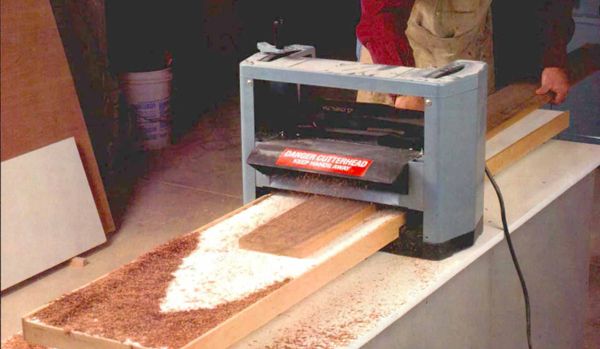Infeed/Outfeed Table for a Portable Planer
Adjustable bed reduces snipe and planing time
Synopsis: Rocket scientist Greg Colegrove applied his skills to figuring out a way to reduce snipe when using his portable planer. He designed a rigid, height-adjustable auxiliary bed from inexpensive materials and hardware. He explains how to build the feed table and platform, how to mount the planer and table to the platform, how to fix and adjust them, and how to check the planer and depth-of-cut settings. A detailed project plan shows how it all fits together. He also includes information on building a portable base, which you might need if space is an issue.
Portable thickness planers that I’ve used have an annoying habit of sniping the ends of boards. My 12-in. Delta planer is no exception. I initially accepted that I’d have to scrap in. on both ends of every board I planed. But soon my conscience, spelled checkbook, convinced me there had to be a better way. Because I really am a rocket scientist, I figured I should be able to cure this otherwise fine machine of its hiccups.
Snipe is a deep cut, like a divot, in one or both ends of a planed board. Snipe occurs when the end of the board tilts upward into the cutterhead. Portable planers are known to be snipers because of their short, rollerless beds. Planers that are adjusted for depth of cut by raising and lowering the head are particularly susceptible.
This problem is hard to correct on many small planers because they don’t have large, stable beds. A machinery engineer I spoke with confided that the best I could expect with a planer like mine, without any modifications, was about .005 in. of snipe. I knew I could do better, so I started looking for ways to improve support for the workpiece as it passed through the planer.
Designing a rigid, height adjustable auxiliary bed
My first effort consisted of extension rollers, which required far too much fiddling, and the rollers had no guides to keep stock moving straight. Then I saw a planer auxiliary bed at a local woodshop that went right through the mouth of the planer. I went back to my shop and adapted the idea, making a table that was stiff but adjustable in height.
The adjustable bed has reduced my planer’s snipe to between .002 in. and .003 in. Such a small discrepancy in thickness is easy to sand or handplane out. And with the long bed, I don’t have to feed and retrieve one board at a time. Stock up to about ft. long is supported at the far end, so I can plane several in a bunch, left to right, or in succession, end to end. Gang-feeding eliminates snipe altogether.
The auxiliary bed reduces my planer’s depth of cut capacity by in., but I rarely plane anything thicker than 4 in. anyway. If I’m planing large, heavy planks, I put blocks under both ends of the table to avoid damaging or moving them.
Choose from two different support platforms—I’ve built two different versions of the auxiliary bed: one in which the feed table sits on a dedicated base and one that can be moved. The only difference between the feed tables is length.
From Fine Woodworking #119
For the full article, download the PDF below:
Fine Woodworking Recommended Products

Rockler Dust Right 1250 CFM

Hedgehog featherboards

Incra Miter 1000HD





















Log in or create an account to post a comment.
Sign up Log in